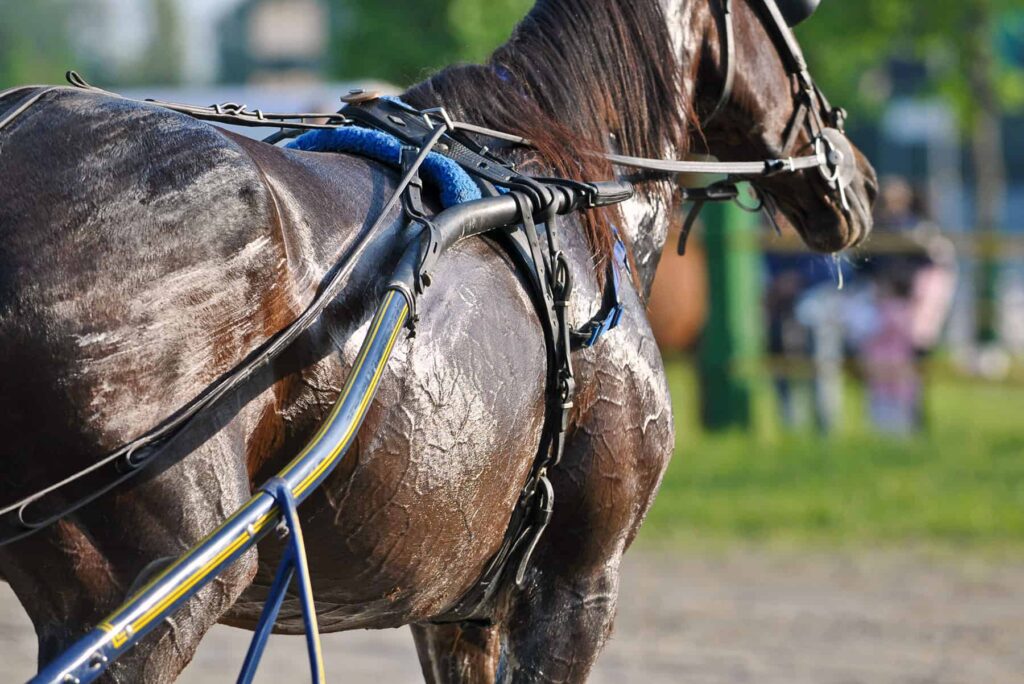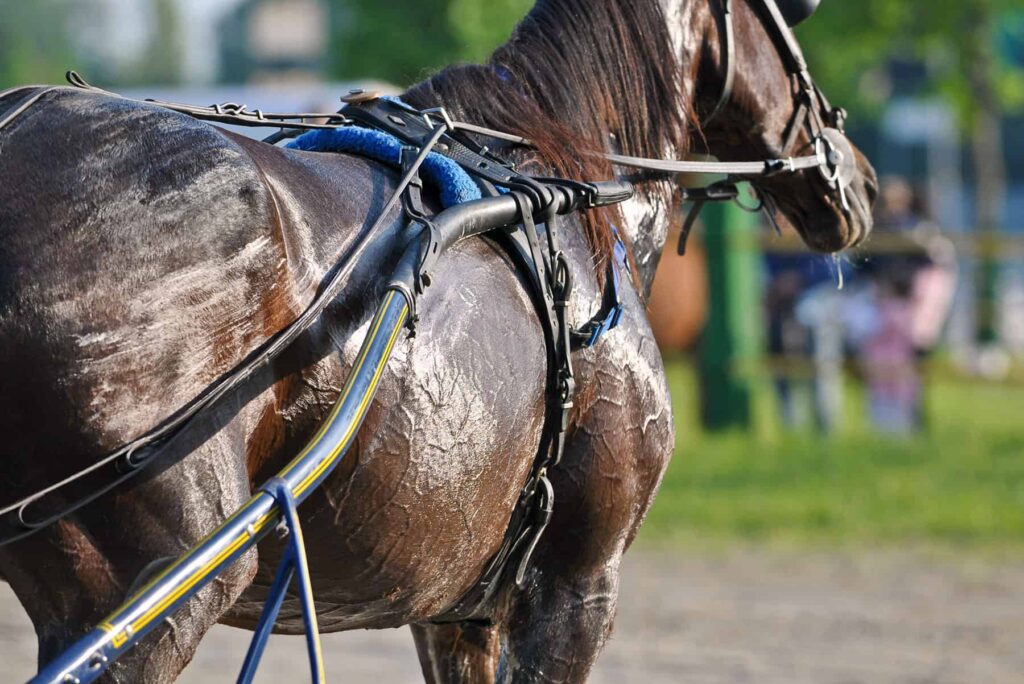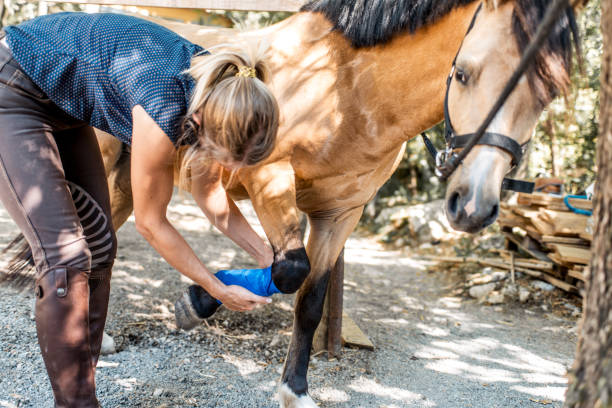How to Recognize an Overheated Horse: Horses are powerful animals, but they’re highly susceptible to heat stress—especially in hot, humid conditions. Recognizing the signs of an overheated horse early can prevent heatstroke, dehydration, and even death.
In this comprehensive guide, you’ll learn:
✔ Key signs of overheating in horses
✔ Immediate first-aid steps
✔ How to cool a horse down safely
✔ Prevention tips to avoid heat stress
✔ When to call the vet
By the end, you’ll know exactly how to protect your horse from dangerous overheating.
1. How Horses Regulate Body Temperature

Unlike humans, horses can’t sweat efficiently in high humidity. Their cooling system relies on:
- Sweating (less effective in humid climates)
- Breathing (panting)
- Blood vessel dilation (releasing heat through skin)
When these mechanisms fail, heat stress occurs, leading to dehydration, muscle cramps, and organ damage.
2. Early Warning Signs of an Overheated Horse
Catch overheating before it becomes life-threatening. Look for:
✅ Excessive sweating (or suddenly stopped sweating—a danger sign!)
✅ Rapid breathing & flared nostrils (normal: 8–16 breaths/min; overheating: 30+)
✅ Elevated heart rate (normal: 28–44 BPM; overheating: 60+ BPM)
✅ Lethargy & stumbling (muscle fatigue)
✅ Dark red or dry gums (dehydration sign)
✅ Skin tenting test (pinch skin—if it stays tented, the horse is dehydrated)
🚨 If you see these signs, act fast!
3. Severe Symptoms (Heatstroke Emergency)
A horse experiencing heatstroke may show:
⚠️ No sweating (dangerously dehydrated)
⚠️ Collapse or inability to stand
⚠️ Glazed eyes or confusion
⚠️ Seizures or uncontrolled muscle tremors
⚠️ Body temperature over 103°F (39.4°C)
HEATSTROKE IS LIFE-THREATENING—CALL A VET IMMEDIATELY!
4. Immediate Steps to Cool Down a Horse
Step 1: Move to Shade & Stop Exercise
- Get the horse out of direct sunlight.
- Do NOT force movement if weak or wobbly.
Step 2: Cool Water Application
- Hose legs & belly first (avoid shocking the heart with cold water on the neck/back).
- Scrape & reapply water continuously for evaporation cooling.
Step 3: Offer Small Sips of Water
- Do NOT let the horse gulp large amounts (risk of colic).
- Electrolyte solutions (if available) help rehydrate faster.

Step 4: Use Fans & Airflow
- Stand the horse in front of a fan or breeze.
- Evaporation cools faster with moving air.
Step 5: Monitor Temperature
- Normal: 99–101°F (37.2–38.3°C)
- Danger zone: Above 103°F (39.4°C)
5. What NOT to Do When Cooling a Hot Horse
❌ Don’t use ice-cold water (causes blood vessel constriction, trapping heat).
❌ Don’t cover with a wet blanket (blocks evaporation).
❌ Don’t let the horse drink too much water at once (risk of colic).
❌ Don’t continue riding/exercising (makes overheating worse).
Read More:- What is the best nutrition food for dogs?
6. Preventing Overheating in Horses
✔ Adjust Exercise Times
- Ride early morning or late evening in summer.
- Avoid peak heat (10 AM–4 PM).
✔ Provide Shade & Ventilation
- Always have access to shade in paddocks.
- Use fans in barns for airflow.
✔ Hydration & Electrolytes
- Always offer clean, cool water.
- Add electrolytes for hard-working horses.
✔ Acclimate Slowly
- Gradually increase workload in heat over 7–10 days.
✔ Clip Heavy Coats
- Body clipping helps sweat evaporate faster.
7. When to Call the Veterinarian
Seek emergency vet care if:
- The horse collapses or can’t stand.
- No sweating despite heat.
- Body temperature exceeds 103°F (39.4°C).
- Seizures or labored breathing occur.
8. FAQs About Overheated Horses
Q: How long does it take for a horse to recover from overheating?
A: Mild cases recover in 1–2 hours with cooling. Severe heatstroke may need days of rest & vet care.
Q: Can a horse die from overheating?
A: Yes! Heatstroke can cause organ failure & death if untreated.
Q: Do certain breeds overheat faster?
A: Draft horses, overweight horses, and older horses are at higher risk.
9. Conclusion & Key Takeaways
Recognizing an Overheated Horse Saves Lives!
🔹 Early signs: Heavy sweating, rapid breathing, lethargy.
🔹 Emergency signs: No sweating, collapse, high temp (103°F+).
🔹 Cooling steps: Hose legs, offer water, use fans.
🔹 Prevention: Ride in cooler hours, provide shade & electrolytes.
Act fast—overheating can become deadly in minutes!
Read More:- What is the best nutrition food for dogs?



